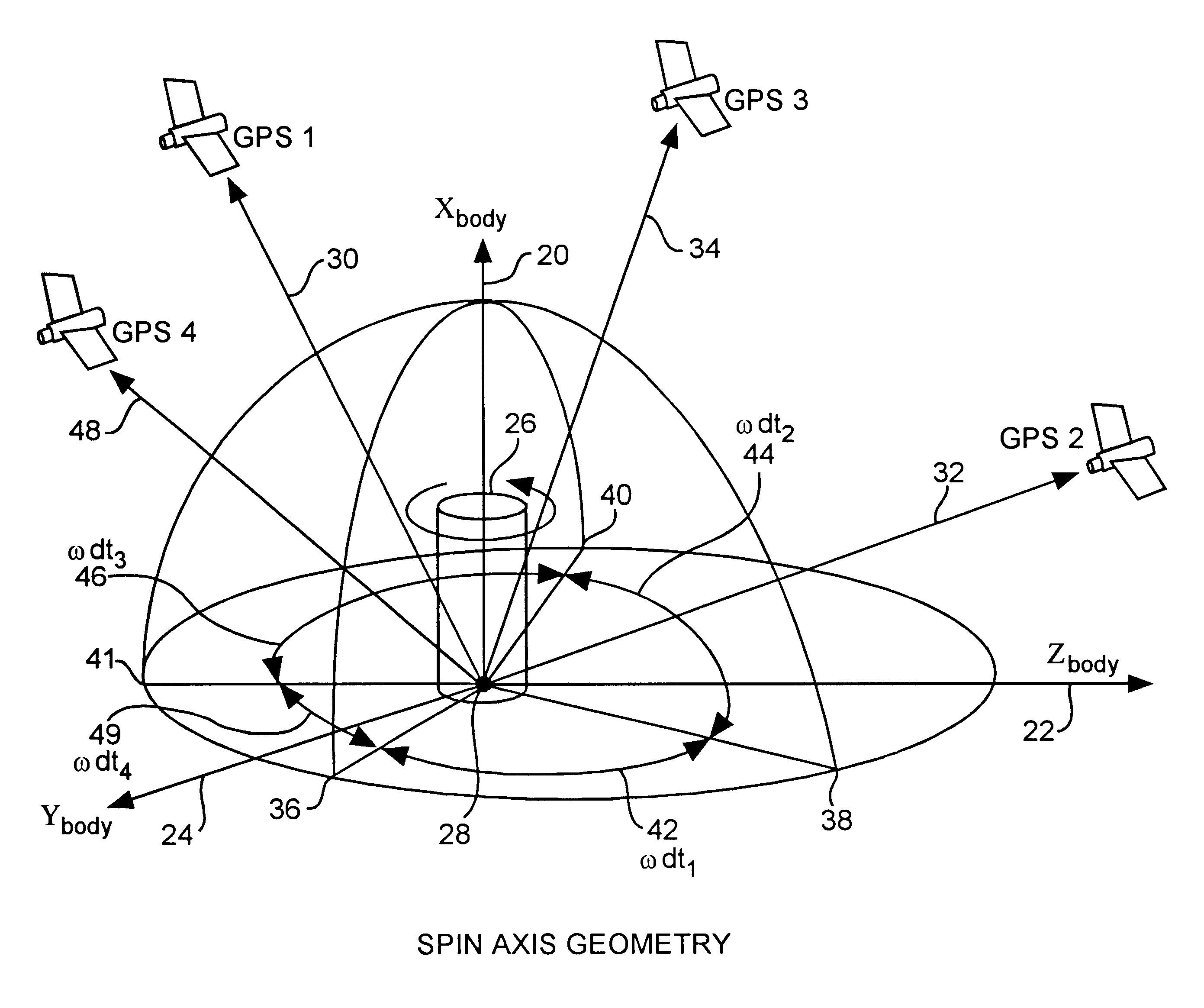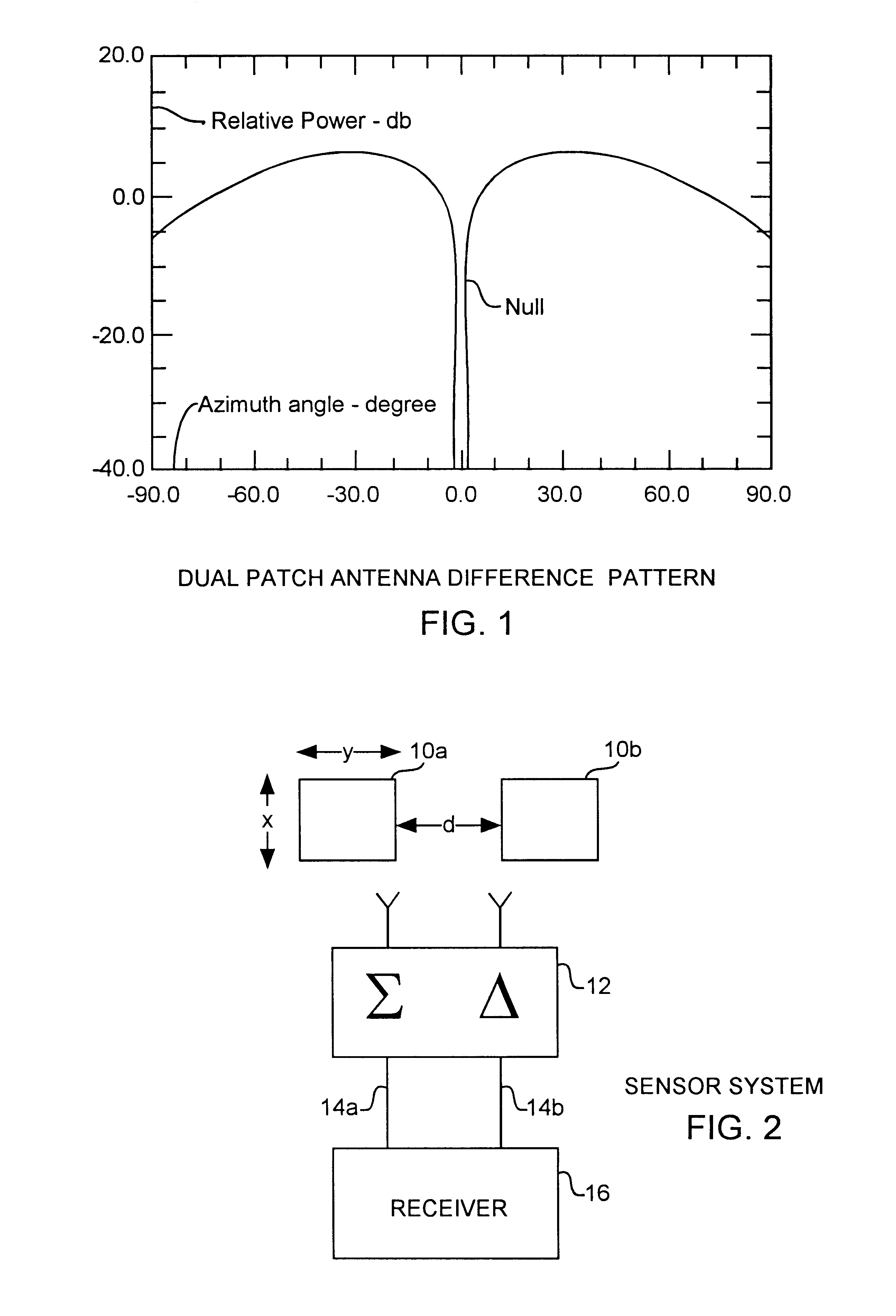GPS patch antenna attitude reference method
a reference method and antenna technology, applied in direction finders, instruments, differential interacting antenna combinations, etc., can solve the problems of unsuitable rotation system angular error with respect to stationary axis, inability to provide antennas with the ability to determine the attitude of rotating spacecraft, and inability to achieve the effect of adjusting the angular error of the stationary axis
- Summary
- Abstract
- Description
- Claims
- Application Information
AI Technical Summary
Benefits of technology
Problems solved by technology
Method used
Image
Examples
Embodiment Construction
An embodiment of the invention is described with reference to the figures using reference designations as shown in the figures. Referring to FIGS. 1 and 2, a pair of patch antennas 10a and 10b in a sensor system are used to form dual patch antenna sum and difference patterns using a conventional sum and difference antenna hybrid 12 communicating a sum signal 14a and a difference signal 14b to a receiver 16. The pair of patch antennas 10a and 10b each create a hemispherical antenna pattern. With the two patch antennas placed nearly side by side, the two hemispherical antenna patterns are combined using the hybrid 12. A null slit pattern is created by placing two antenna elements side by side with the hemispherical patterns overlapping so that when subtracted from each other using the hybrid 12, the hemispherical pattern of one patch antenna is shifted out of phase and then added to the other hemispherical pattern of the other patch antenna producing a narrow null slit at the center p...
PUM
 Login to View More
Login to View More Abstract
Description
Claims
Application Information
 Login to View More
Login to View More - R&D
- Intellectual Property
- Life Sciences
- Materials
- Tech Scout
- Unparalleled Data Quality
- Higher Quality Content
- 60% Fewer Hallucinations
Browse by: Latest US Patents, China's latest patents, Technical Efficacy Thesaurus, Application Domain, Technology Topic, Popular Technical Reports.
© 2025 PatSnap. All rights reserved.Legal|Privacy policy|Modern Slavery Act Transparency Statement|Sitemap|About US| Contact US: help@patsnap.com



